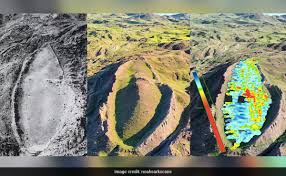
Breaking News
 Dave Smith Reacts to Tesla Protests
Dave Smith Reacts to Tesla Protests
 Joe Rogan Reacts to Marie Le Pen Sentence
Joe Rogan Reacts to Marie Le Pen Sentence
 Joe Rogan Reacts to Coordinated Protests
Joe Rogan Reacts to Coordinated Protests
 This woman was a paid protester at a Hands Off Protest. She details what she had to do to get paid.
This woman was a paid protester at a Hands Off Protest. She details what she had to do to get paid.
Top Tech News
 World's Smallest Pacemaker is Made for Newborns, Activated by Light, and Requires No Surgery
World's Smallest Pacemaker is Made for Newborns, Activated by Light, and Requires No Surgery
 Barrel-rotor flying car prototype begins flight testing
Barrel-rotor flying car prototype begins flight testing
 Coin-sized nuclear 3V battery with 50-year lifespan enters mass production
Coin-sized nuclear 3V battery with 50-year lifespan enters mass production
 BREAKTHROUGH Testing Soon for Starship's Point-to-Point Flights: The Future of Transportation
BREAKTHROUGH Testing Soon for Starship's Point-to-Point Flights: The Future of Transportation
 Molten salt test loop to advance next-gen nuclear reactors
Molten salt test loop to advance next-gen nuclear reactors
 Quantum Teleportation Achieved Over Internet For The First Time
Quantum Teleportation Achieved Over Internet For The First Time
 Watch the Jetson Personal Air Vehicle take flight, then order your own
Watch the Jetson Personal Air Vehicle take flight, then order your own
 Microneedles extract harmful cells, deliver drugs into chronic wounds
Microneedles extract harmful cells, deliver drugs into chronic wounds
 SpaceX Gigabay Will Help Increase Starship Production to Goal of 365 Ships Per Year
SpaceX Gigabay Will Help Increase Starship Production to Goal of 365 Ships Per Year
 Nearly 100% of bacterial infections can now be identified in under 3 hours
Nearly 100% of bacterial infections can now be identified in under 3 hours
Has Noah's Ark been found? Scientists reveal plans to dig up boat-shaped mound in Turkey...

It inspired one of the most famous stories from the Bible, allegedly saving mankind and two of every animal during an ancient flood.
And ever since the early days of Christianity, Noah's Ark has inspired a fleet of devotees who believe it was actually real.
Scientists even think they've found the remains of the wooden vessel – and now they want to prove it.
Experts at California firm Noah's Ark Scans are prepared to dig up Durupinar Formation, a 538-foot-long boat-shaped geological formation in eastern Turkey.
First it will be conducting soil sampling for traces of wood at the site, which is made of a type of iron ore called limonite.
It will also continue to beam down radar waves in an attempt to 'see' underground and pick out indications of an Ark-shaped object.
'The location lies in an active earth flow with harsh winters, so protecting the area is our top priority,' Andrew Jones, researcher at Noah's Ark Scans, told the Sun.
'Over the next few years, our Turkish university partners will conduct non-destructive tests like soil sampling, radar scans, and other methods to determine if the structures we've detected are truly man-made or simply natural formations. Only after we gather enough evidence and have a proper preservation plan in place will we consider excavating.'
Durupinar Formation has long captivated researchers due to the fact that its shape and structure almost match those given for the Ark in the Bible.
Located just 18 miles (30km) south from Mount Ararat, Turkey's highest peak, Durupinar Formation has only been known about for under a century.
According to local reports, heavy rains and earthquakes exposed the formation from surrounding mud in May 1948 before being discovered by a Kurdish shepherd.
Ever since, the site has drawn believers in the Ark, although interest is really ramping up following the ambitious efforts from Noah's Ark Scans.
Already, the project has performed tests on 22 soil samples at Durupinar Formation which returned remarkable results.
There was a lower pH, higher organic matter and higher potassium inside the 'boat shape' – changes consistent with rotting wood, the team say.



